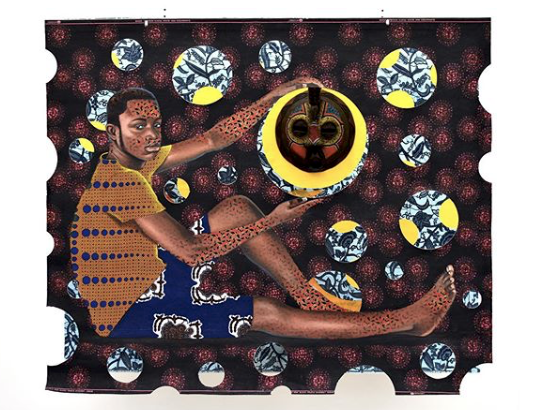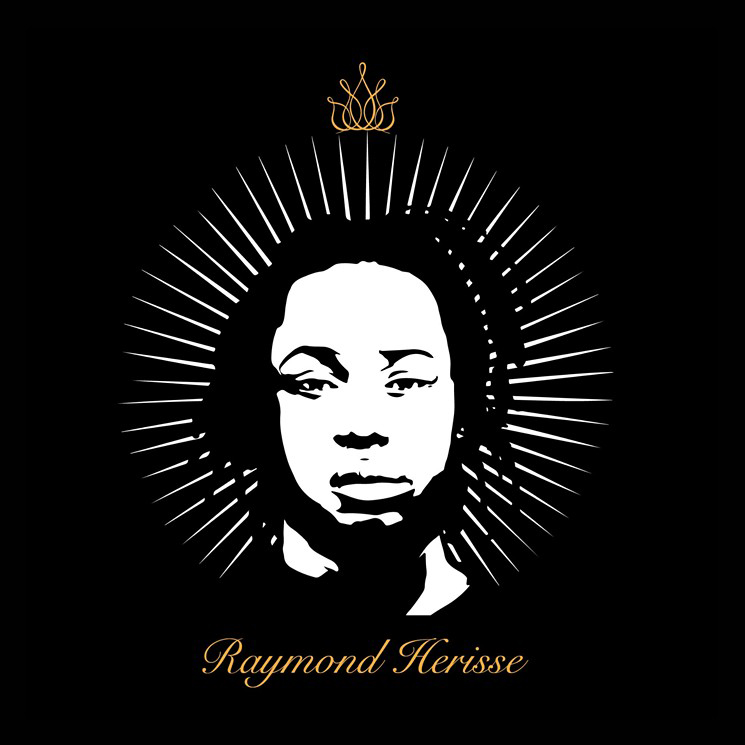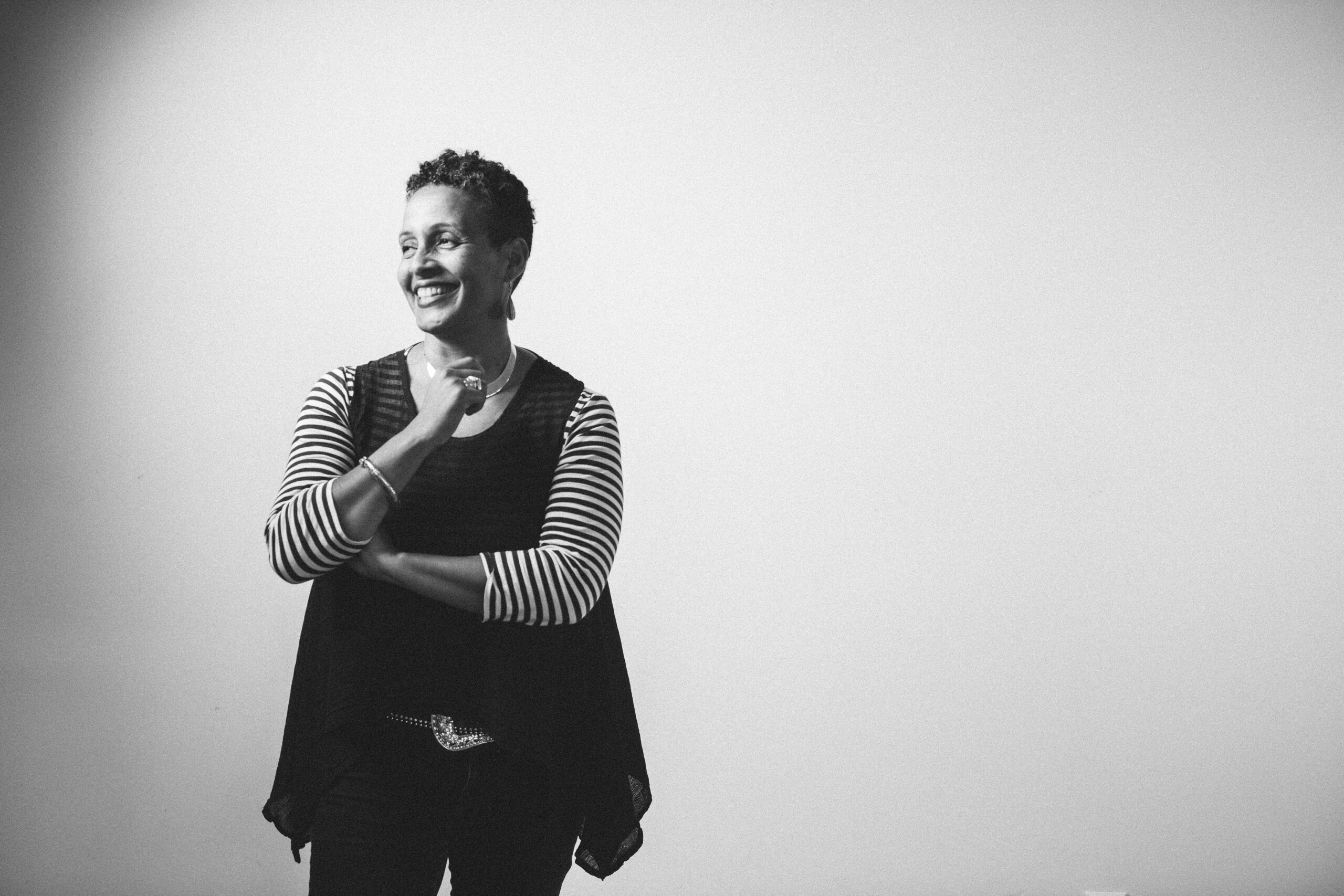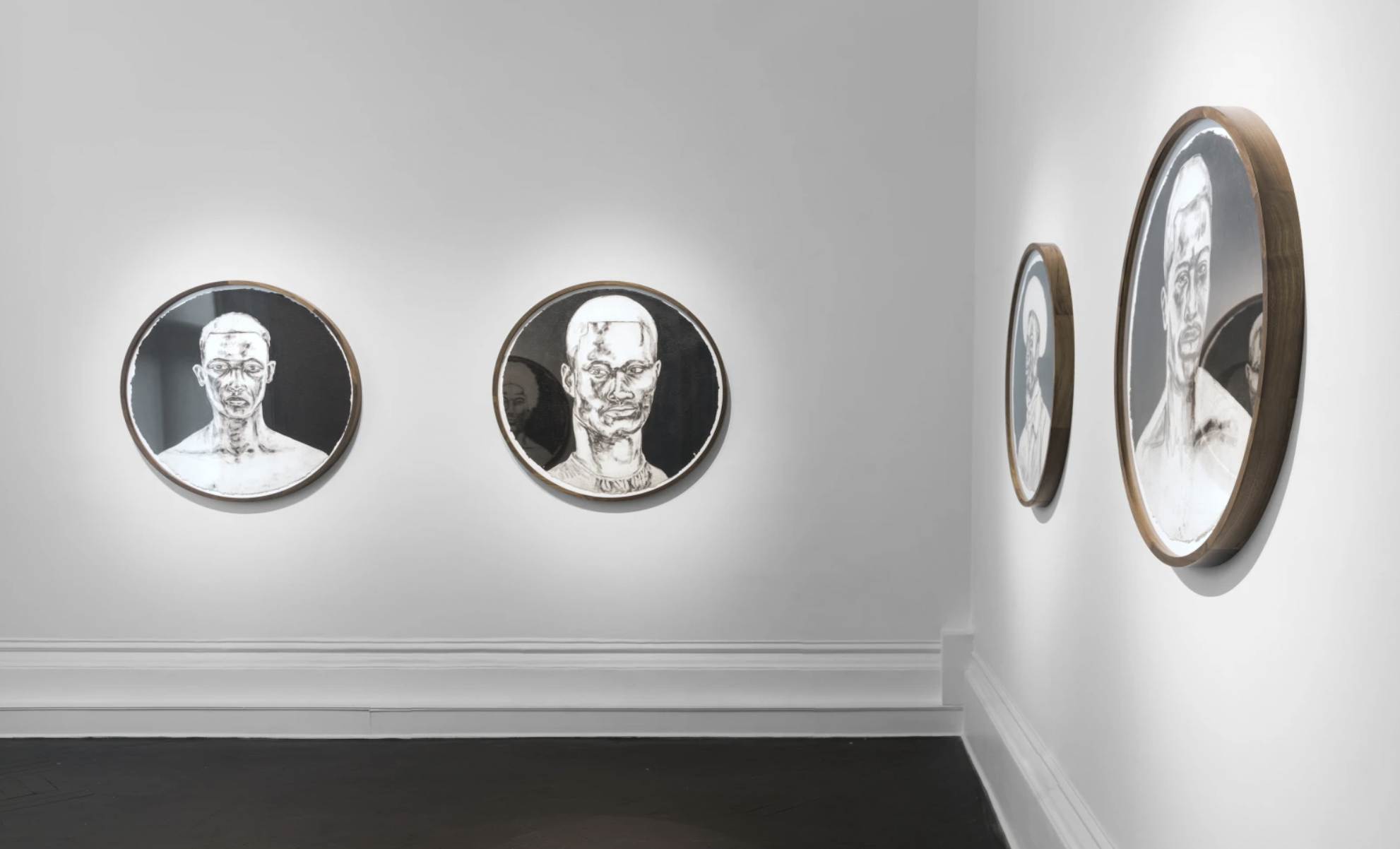Above: Patrick Quarm, Parallel Index , 2019.
N’Namdi Contemporary, Miami, Florida, inaugurated its newly relocated space at 6505 NE 2nd Avenue, in Miami’s Little River/ Little Haiti neighborhood with a selection of large figurative paintings by African artist Patrick Quarm of Ghana. The exhibition from Sept. 14-Oct. 12, 2019, curated its impressive selection of paintings from a contemporary artist of the African Diaspora. Quarm was born in Ghana (West Africa) and has spent time in the studying and expanding his craft in both Ghana and the United States.
Quarm’s paintings present works of his personal exploration into the meaning of his and Ghana’s place in the contemporary world. After serving as a British and Dutch outpost during the African-Atlantic slave trafficking era, Ghana (formerly known as the Gold Coast and Slave Coast) gained its political independence from the United Kingdom in 1957. The country is one of historical, rich artistic traditions that continue with today’s contemporary artists.
We are still in an active mode of assessing and navigating forward in a world where we are attempting to understand and unshackle ourselves from this colonial legacy. Postcolonial social and political issues are at the core of the relationship among the United Kingdom’s former colonies, of which Ghana was one.
The current moment finds a process of decolonialism with many options to consider and ways to embrace a different social and cultural environment than we have today, while not stigmatizing the local as “primitive” and backward-looking. It certainly is not. Putting one’s “local traditions” into a mode of potential discovery is a viewpoint Patrick Quarm has embraced with openness, and he invites viewers of his paintings to discover with him the results of his investigations.
While several budding artists search for ways, like how to buy Instagram followers, to get their work noticed, this does not apply to these artists who seem to be attracting impressive traffic to their works. Say for Patrick Quarm, this living in both technological and conventional social spheres is a big part of his hybrid identity. Other artists in many parts of the diaspora have explored their own hybrid relationships when seeking meaning to their fame and existence.
“Hybridity has become a trope employed in several areas of cultural research, theory, and analysis; and one of the most broadly used and reviewed concepts in postcolonial theory.” (Critiques of Hybridity | Thabit Alomari)
In sharing his visualization of the hybrid self, Patrick Quarm offers viewers a visage of the human figure merged with the abstraction of “African print” textiles. Some of the canvases are cut and shaped, and are collaged with the print textiles. They are richly multilayered and skillfully painted, showing figures in repose and movement.
The human figures in open space are merged with abstract print patterns, using a technique that gives the appearance of “fading in and out” of primary focus. Quarm uses the print fabric by painting directly on it. In this sense, the textile print fabrics are collaged to the canvas, creating an overall mixture of figures merging with the fabrics.
The paintings are unframed, with some unusual double mounting of canvases; think of tapestries mounted on the wall or hung in relief in terms of their presentation. This allows a viewing of both canvases. Other paintings have cutouts with the rear canvas viewable through the openings, allowing their lush colors to shine through.
“African prints,” also known as “Ankara” and Dutch wax prints, are omnipresent and common materials for clothing in Africa, especially West Africa. The Dutch wax prints quickly integrated themselves into African apparel, sometimes under names such as “Veritable Dutch Hollandais” and “Wax Hollandais.” Women used the fabrics as a method of communication and expression, with certain patterns being used as a shared language, with widely understood meanings.” (Wikipedia)
Quarm does not employ the textiles in a way described above, “as a method of communication with certain patterns being used as a shared language.” Doing so may cut off one possible avenue of “hybrid” exploration that perhaps he will explore more fully at a later time.
The people depicted are purposefully in calm or relaxed states of being, according to the artist. He wants us to think about the normative reality that exists in his life. In addition, the artist is speaking to the past and present in a conversation that is ongoing on both sides of the Atlantic. It is important to him that we share many things in common with people who live on another continent.
Miami hopes to see more art by Patrick Quarm, as it has been a refreshing and exciting exhibition of Black art.
Patrick Quarm was born in Sekondi, Ghana having been awarded a BFA from Kwame Nkrumah University of Science and Technology (2012) and a MFA from Texas Tech University (2018). Recently, he participated as artist-in-residence in the 2019 Red Bull Arts Detroit.











